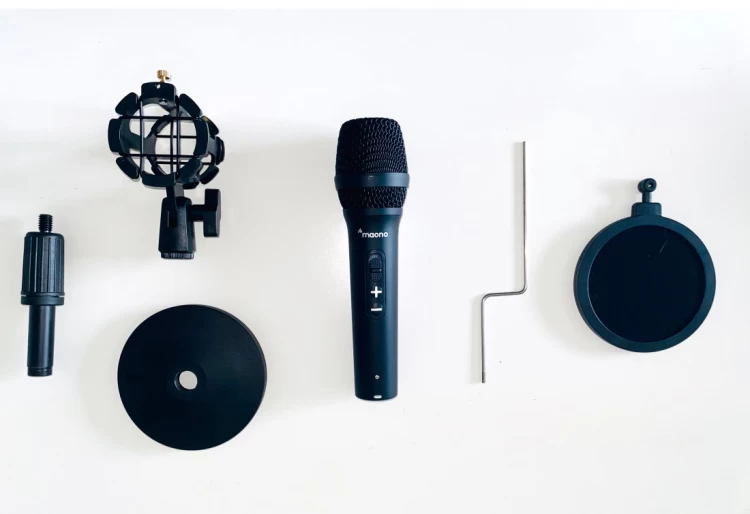Maono HD300 Review | Musician Nerd
Updated on Mar 16, 2022
Table of Contents
In this article we’ll be reviewing the Maono HD300 USB/XLR Dynamic Desktop Microphone & seeing how it compares against some of its rivals. We’re extremely excited to have been selected for pre-launch reviewing, and love watching newer brands make a rise in the microphone scene.

Maono HD300 With Desktop Stand And Popfilter
The team at Musician Nerd specializes in microphones, and so we’ve worked with many big-name brands that you’ve probably heard of. A lot of popular microphones have been around for ages, so when newer brands like Maono pop up and release their own competitors to some of our favorite microphones, it’s really exciting for us.
Some of you might see this microphone and be able to tell what kinds of mics we’ll be comparing it against. There are a few dynamic desktop microphones that we’re used to using in this price range that offer similar features, so this is going to be a great microphone to test & compare.
We’re going to start by telling you more about the Maono HD300 USB/XLR Dynamic Desktop Microphone, what we like about it, and then of course, what we think could be improved. We’ll then talk about some of the alternative microphones in this price range and how it compares. By the end of this article, you’ll have a great sense of where this microphone stands.
Why It's Great
First and foremost, the main reason I love this new dynamic microphone is how much value we're getting at such a small cost. In the microphone space, the cost of the Maono HD300 is really low, but brings a lot of isolated sound with great quality.
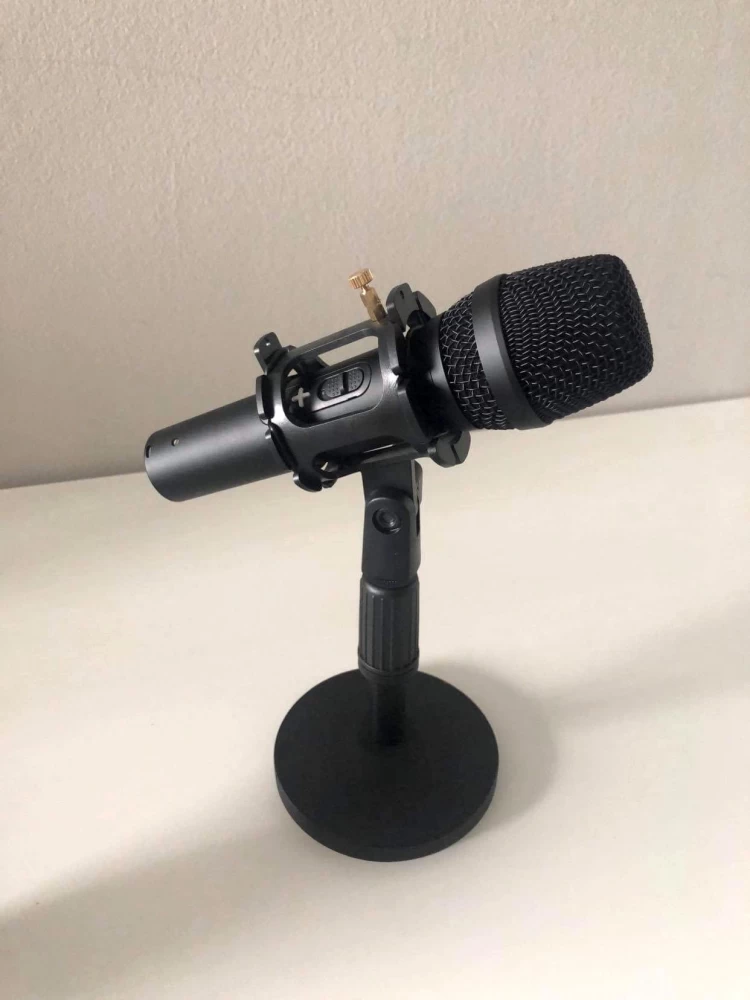
Maono HD300 Without Popfilter
The Maono HD300 has a strong frequency range of 40Hz to 17kHz, which is a bit more extended than your typical dynamic microphone in this price range. Unlike many condenser microphones, the Maono HD300 cuts the low-end frequencies at 40Hz, reducing a lot of background grumbling noise.
On the higher end, the frequencies come across a little more rounded than similar microphones, giving a little more support to the mid-range presence. I found the Maono HD300 really excels at offering this presence to your voice, so you sound strong and concise in your recordings.
Let's not forget about the dual-compatiblity with both XLR & USB interfaces. This level of flexibility is super important for more affordable microphones like the Maono HD300 because not everyone is able to afford a microphone preamp, and so they end up buying an XLR to USB cable. It's better off to let you choose which input works best for you.
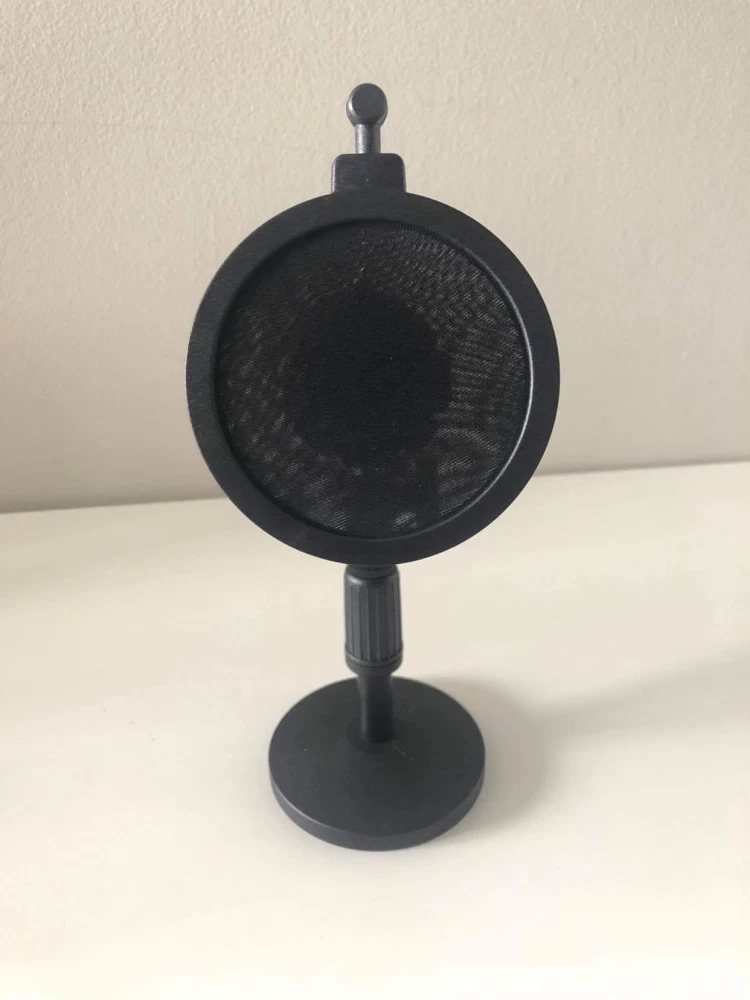
Maono HD300 Showing Popfilter
On it's own, the Maono HD300 is at a high risk for plosive noise, but once you get a pop-filter on it, you'll find it sounds 10x better without a drop in quality. Dynamic vocal microphones are a lot more directional than your typical condenser mic, and so plosive noise gets picked up a little easier, though as we'll mention later, I found the Maono HD300 to handle this worse than others.
On the microphone itself, we get volume controls and a microphone monitoring headphone jack. Due to the USB option, it's really good that they offer on-mic volume control, as you generally won't have that option without a preamp. It also makes it good for multiple people to use in one session as some of us speak louder than others.
All around the Maono HD300 has some impressive features. The quality is much more than I expect from microphones in this price range, so let us talk more about what it's good for.
What It's Good For
The Maono HD300 has been designed to be a desktop microphone for podcasting. I would expand that and say it's good for all speech-based applications, from podcasts to YouTube videos to live public speaking. It handles the voice really well, gives a good presence boost, and sounds natural.
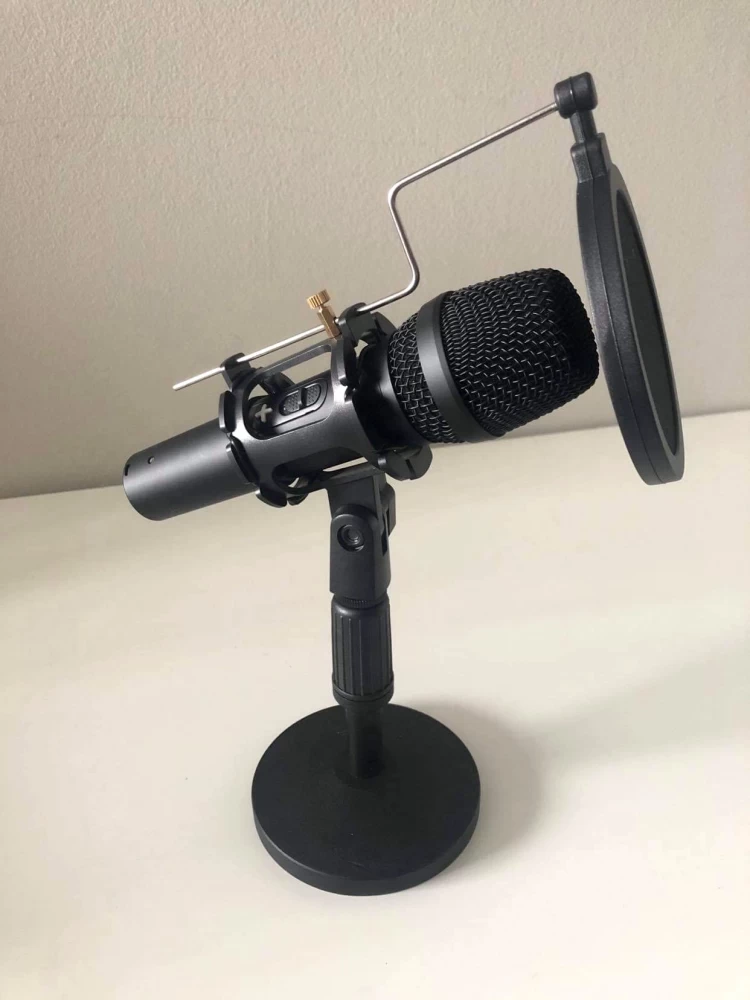
Maono HD300 On Desktop With Popfilter
The Maono HD300 uses a cardioid polar pattern, which means it picks up noise from the front of the capsule, while rejecting noise from the sides and rear. As such, I found it picks up very minimal background noise. Almost as little as my much more expensive Shure SM7B.
The design of this microphone blocking out background noise and giving a good vocal presence makes it a good choice for those recording music at home on a budget. It's expensive even for a beginner studio microphone, and so I always recommend affordable vocal mics like this one for those starting, especially if you live in a noisy environment.
Lastly, the USB option makes it great for plug & play with your computer as well. This is something a lot of YouTubers and Podcasters look for, which makes it an excellent candidate for your next microphone for YouTube. I did find it to perform better as an XLR microphone, but the results weren't as noticeable as some other brands.
The Downsides
The first criticism I have is related to the quality of the audio. I found my recordings to sound a little more dull sounding. This is not surprising given the price point, and that it's a dynamic microphone, but for the frequency response range they're using, I expected more.
The second criticism I have is with their desktop stand bundle (HD300T). This includes the contents we used for the banner image of this article. The shock mount is intuitive, and I've used similar in the past, and I find this style to be effective. Unfortunately, the included pop filter did not impress me as much. I struggled so much with getting it on there, as they have you screw it onto a separate metal component. I understand the versatile design they were going for, but I would've been happier with a different approach.
Pros & Cons
Pros
- Affordable
- Sturdy, Rugged
- On-mic Controls
Cons
- Audio is a little flat
- Bad for plosives without the pop filter
Best Used For
- Podcast / Video
- Public Speaking
- Budget Home Studio
Comparisons
Right off the bat, let’s just say what microphones this compares to. I find the Maono HD300 USB/XLR Dynamic Desktop Microphone performs very similar to the Audio-Technica AT2005 USB/XLR & Audio-Technica ATR2100x USB/XLR microphones. They’re all under $100, have similar features, and are designed for podcast/desktop use.
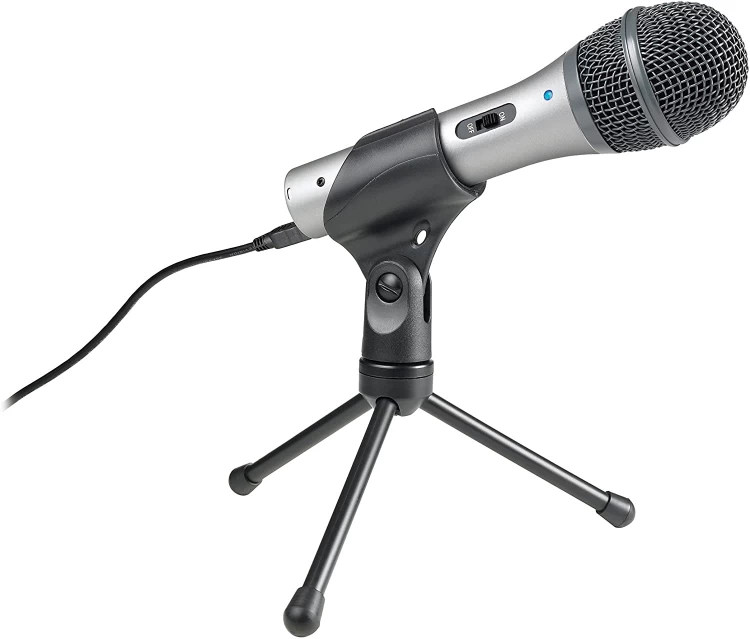
Audio-Technica ATR2100 USB Cardioid Dynamic
Fortunately, our team already has the Audio-Technica ATR2100x for comparison. The results were actually a bit surprising to me, and there's a lot of pros and cons to be said for each.
The first area of improvement that the Maono HD300 offers over the ATR2100x would be the high-end frequencies. They don't come across as sharp, which is a major criticism I have with the ATR2100x & the AT2005USB+.
That's not all good, however, which leads me to where the Maono HD300 failed. The audio does not have as much depth to it as the ATR2100x. It's very flat and lacks in the detail the ATR2100x brings. This isn't a bad thing, it's nearly half the price. The Audio-Technica ATR2100x offers a sampling rate of 24-bit/192kHz, while the Maono is only 16-bit/48kHz. The Maono HD300 has a stronger mid-range control, but you're sacrificing some clarity.
The second area that I found to be better on the Maono HD300 would be the physical design. It’s not only more rugged, but the cable connection ports feel less likely to wear, which is an issue I’ve had with several Audio Technica podcasting microphones.
Summary
Overall, the Maono HD300 is an exciting new dynamic desktop microphone coming to the market. For an under $70 microphone with USB & XLR compatibility, the sound is really strong & really impressive. If this is a sign of what Maono is bringing to the table, then I'm extremely excited to see what else they release.
If you want a new microphone for podcasting but you're not looking to invest a lot of money, do be sure to give the Maono HD300 a look. You're getting a lot of bang for your buck, and the desktop kit that we got includes a weighted, sturdy desktop stand, shock mount & pop filter.
Should you decide to buy one, let us know your thoughts in the comments below! Did you love it or hate it? Perhaps you think we're being a little too harsh, or not harsh enough! Tell us your thoughts, as we value your feedback. Thanks!
Posted on Feb 18, 2021
Streaming Recording
Have questions for us? Email us at info@musiciannerd.com
